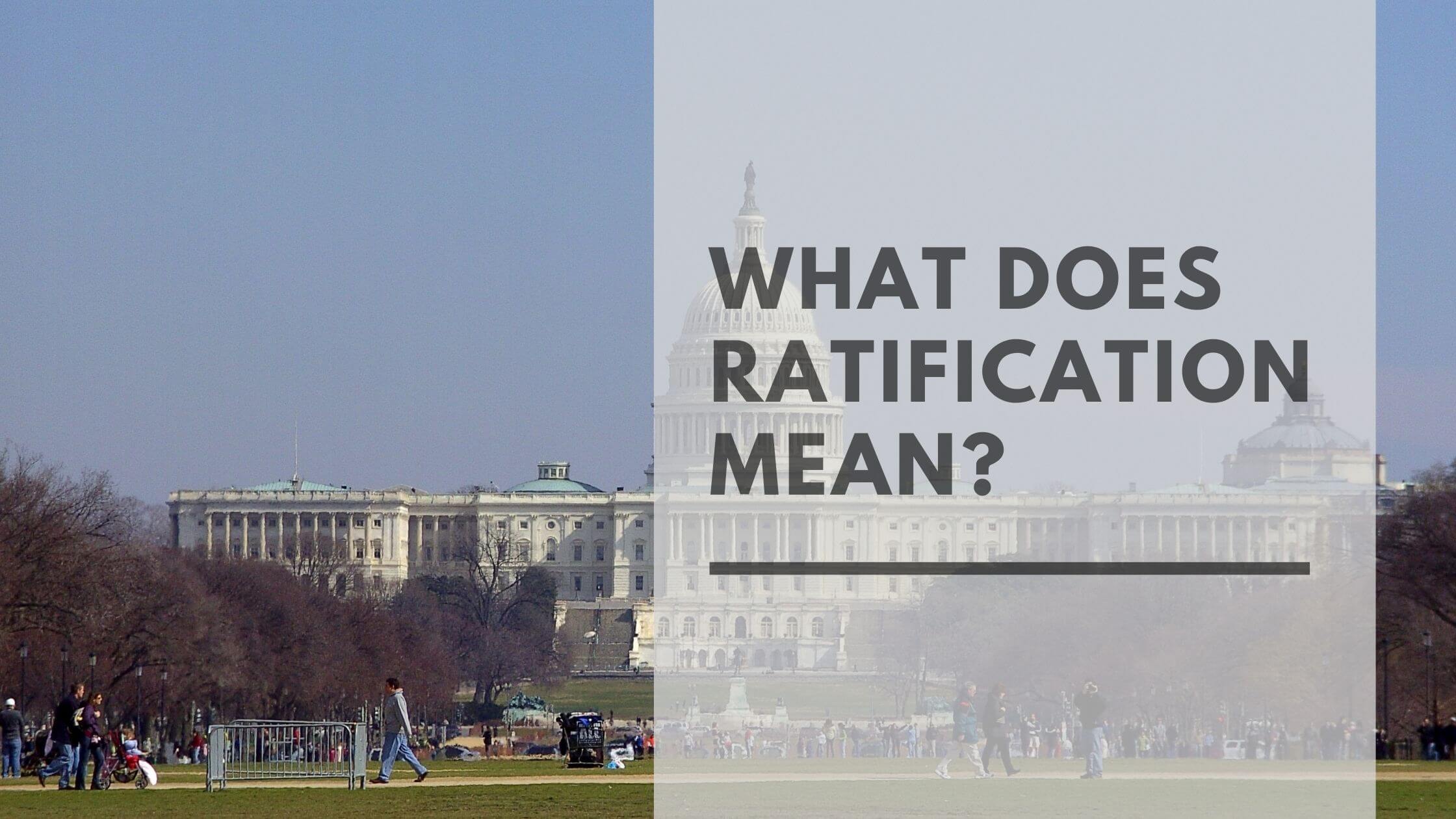Table of Contents
ToggleWhen learning about the history of the United States Constitution and its later amendments, we frequently see the term ratification. For these important proposals to become legal, they needed to be ratified. What does this mean, what are the requirements for ratification, and how does this relate to the Constitution and its amendment?
What does ratification mean?
The simple definition of ratification is to make something officially binding and legal with the required consent. This means taking something like a treaty, proposed amendment, or other important contracts to those with the power to sign and validate the document. In the United States, this ratification process has been an essential formal procedure for creating important documents and any Constitutional amendment.
In the United States, power is split between the executive, legislative, and judicial branches of power in a system of checks and balances. Congress proposes bills in the legislative branch while the President can sign or veto them in the executive branch. But, there is also a role for state legislatures in the legislative branch, and they are essential when it comes to state ratification.
How Does Ratification Work?
A proposal must first be submitted and approved by Congress to change the United States Constitution. Many ideas are put forward that never make it past the first hurdle due to a lack of support. But, others will pass both the House of Representatives and Senate via a two-thirds majority. The proposal goes forward to the state legislatures for further approval. Once enough states agree and ratify the proposal, it goes back to Congress for an official announcement and adoption.

The Three-Fourths Majority
It isn’t necessary for every state in the United States to agree to ratifying an amendment. This would take far too long, and nothing would ever change. Instead, the three-fourths majority means that a large enough number of the states are in agreement for it to be seen as the will of the people. So, at present, 38 state legislatures must agree out of 50.
The Role of Ratification in American History
This ratification process may sound long and burdensome, but it is necessary to ensure the best outcome and a fair democratic process. This was clear in the ratification process for the United States Constitution. The document was eventually drawn out to the approval of Congress after a long convention in 1787. The delegates for twelve out of thirteen colonies present had compromised and agreed on the best way to improve upon the Articles of Confederation.
It was down to the state legislatures to agree, ratify the constitution, and make it fully legal. Here, the rule for the three-fourths majority meant 9 out of 13 needed to sign. But, it took a while to get to that ninth signature, with New Hampshire doing so on June 21st, 1788.
Those states with Anti-Federalist leanings or other concerns dragged their feet and forced those responsible for the document into negotiations. These negotiations led to two major agreements that would shape the nation. Without this essential ratification process, we might not have had the Bill of Rights or the creation of Washington, D.C., as the new capital.
The Treaty of Paris
Ratification is important to ensure that everyone involved in a decision is onboard and that the adoption of any bilateral treaties, multilateral treaty, bill, or other document is legally binding. This led to another drawn-out process in 1783-84 with the ratification of the Treaty of Paris.

Although independence was declared in 1776, it wasn’t until September 3rd, 1783, that the British met with American delegates to formally recognize this and sign the Treaty of Paris. The document needed to be ratified by Congress and the King of England to be fully legal. A deadline was set for these signatures, with the King exceeding it by five weeks and signing on April 9th, 1784.
Ratifying Constitutional Amendments
The ratification process has remained an essential part of the American democratic process ever since the creation of the Constitution and the official moment of acknowledging independence. Ratification is also needed to pass new laws and amendments to the Constitution.

Get Smarter on US News, History, and the Constitution
Join the thousands of fellow patriots who rely on our 5-minute newsletter to stay informed on the key events and trends that shaped our nation's past and continue to shape its present.
The time frame from the moment an amendment is proposed to the moment it is ratified can vary greatly. It takes time for enough states to agree to the measure and approve the amendment via the correct procedures. Also, the increasing number of states means a shift in just how many states need to sign for that three-fourths majority.
The shortest period was relatively recent. The 26th Amendment to lower the voting age to 18 was proposed on March 23rd, 1971, and ratified just 100 days later. The longest was 202 years, seven months, and 10 days for the 27th Amendment regarding congressional pay. This leads to an important question about time limits.
Is There a Time Limit on the Ratification of Amendments?
Congress has some freedom over the precise method of ratification they chose for an amendment and the application of a time limit. The more recent cases of proposed amendments have had a time limit of seven years. If the measure doesn’t reach the three-fourths majority in that time frame, it fails unless Congress adds an extension.
A time limit means that measures can’t sit on the table indefinitely if it is clear that not enough states will agree to it. This approach has also led to the failure of some major proposals in recent times. The Equal Rights Amendment was proposed on March 22nd, 1972, and failed to reach the majority by the same date in 1979 or by the end of the extension to June 30th, 1982. The same time limit led to the failure of the District of Columbia Voting Rights Amendment of 1978. Meanwhile, other proposals without this time limit are still classed as pending, including the Child Labor Amendment of 1924.
Ratification Ensures a Measured Approach To Change
The ratification process is important, not just because of what it has helped create but because of what has been avoided. If everything popular in Congress became legal, the Constitution could change yearly. Instead, this three-fourths majority from the state legislatures provides that extra level of scrutiny and control. The process may be complex, but not without good reason.










